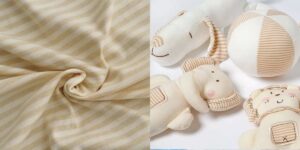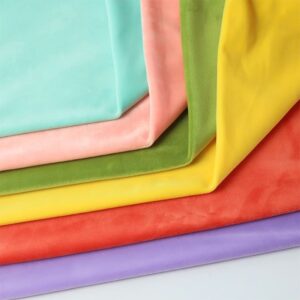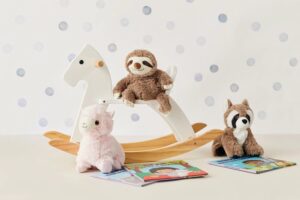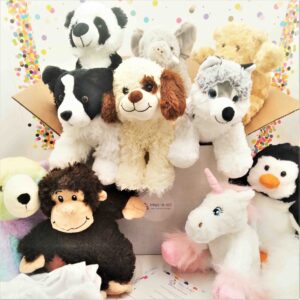When it comes to toys, the materials used aren’t just about looks or feel—they directly impact safety, durability, and even environmental footprint. Choosing the right materials is a complex decision that manufacturers must get right to satisfy parents, kids, and regulators alike.
In short, the best materials for toys are those that balance safety, durability, non-toxicity, and eco-friendliness. Commonly used materials include polyester plush, organic cotton, natural rubber, and recycled fibers, each offering unique benefits depending on the toy’s purpose.
Imagine a child clutching a beloved teddy bear, soft and safe after years of play, or a toddler chewing on a colorful teether made from natural rubber. Behind these simple joys lies the crucial choice of materials that ensure comfort, fun, and peace of mind. Ready to discover what really goes into your favorite toys? Let’s dive deep.
1. What types of materials are commonly used in toy manufacturing?

The toy industry uses a mix of natural and synthetic materials, including polyester, cotton, rubber, foam, and recycled fibers, chosen for their softness, safety, and durability.
Exploring Toy Materials
- Natural vs. Synthetic: Natural materials like organic cotton and natural rubber are prized for safety and sustainability but may cost more and have limited durability. Synthetic materials such as polyester plush and EVA foam offer durability, stain resistance, and versatility but raise environmental concerns.
- Common Fabric Choices: Polyester plush is a favorite for stuffed toys due to softness and easy care. Cotton blends provide breathability and hypoallergenic qualities. Velboa and minky fabrics offer smooth textures with vibrant colors, popular in character toys.
- Stuffing Materials: Polyester fiberfill is widely used for softness and shape retention. Alternatives include natural wool, kapok, and recycled fiberfill, which appeal to eco-conscious brands.
- Plastic Components: ABS plastic is common in hard parts like eyes or teeth for safety and durability. Newer bio-based plastics are emerging to reduce environmental impact.
- Rubber and Silicone: Natural rubber teethers are popular for babies, offering safety and chew resistance. Silicone offers flexibility and hygiene but can be pricier.
This multi-material approach means toys must be carefully designed to balance cost, safety, tactile appeal, and sustainability demands, often leading to hybrid constructions.
| Material Category | Specific Materials | Key Features | Pros | Cons |
|---|---|---|---|---|
| Natural Materials | Organic cotton, Natural rubber | Safety, sustainability | Hypoallergenic, eco-friendly | Higher cost, limited durability |
| Synthetic Materials | Polyester plush, EVA foam | Durability, stain resistance, versatility | Durable, easy care, vibrant colors | Environmental concerns, non-biodegradable |
| Fabrics | Polyester plush, Cotton blends, Velboa, Minky | Softness, breathability, hypoallergenic qualities | Comfortable, popular in character toys | Some fabrics may shed fibers |
| Stuffing | Polyester fiberfill, Wool, Kapok, Recycled fiberfill | Softness, shape retention | Soft, eco-friendly options available | Natural stuffing may degrade faster |
| Plastics | ABS plastic, Bio-based plastics | Safety for hard parts (eyes, teeth) | Durable, safer bio-plastic options emerging | Traditional plastics may be toxic |
| Rubber & Silicone | Natural rubber, Silicone | Safety, chew resistance, flexibility | Safe for babies, hygienic | Silicone can be more expensive |
2. How do material choices affect toy safety and child health?
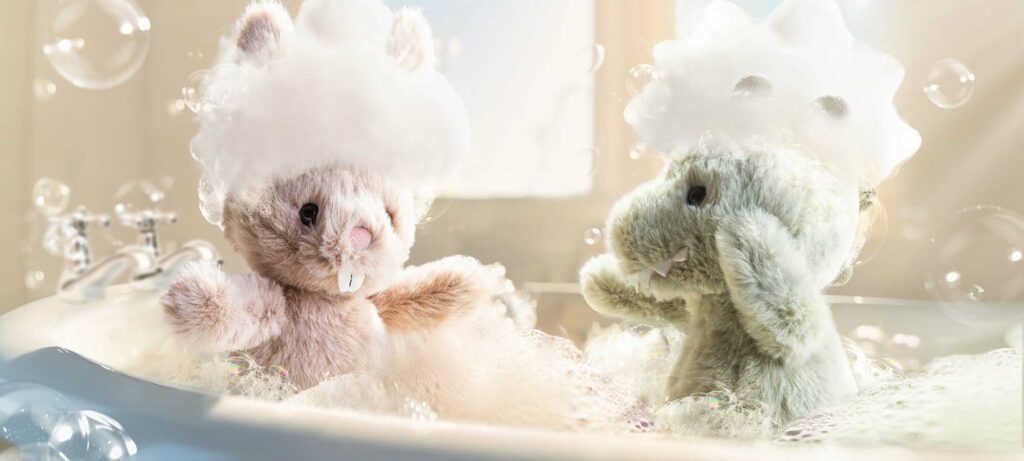
Materials directly impact toy safety by determining toxicity levels, choking risks, and allergen exposure, making non-toxic, hypoallergenic fabrics and plastics essential.
Material Safety and Health Implications
- Toxicity and Chemicals: Some plastics release harmful chemicals like phthalates or BPA; strict regulations now require toys to meet safety standards such as ASTM F963 (US) or EN71 (EU). Natural materials like organic cotton avoid chemical dyes and pesticides but must be certified to guarantee safety.
- Allergen Risks: Wool and latex can cause allergic reactions; hypoallergenic polyester or cotton blends reduce this risk. Manufacturers often perform patch tests and certifications.
- Choking Hazards: Small hard parts must be securely attached; materials that degrade or shed fibers can increase hazards. Soft stuffing materials reduce injury risk on impact.
- Bacterial Growth and Hygiene: Materials that absorb moisture can harbor bacteria or mold if not properly treated. Antimicrobial fabric treatments and silicone surfaces help maintain hygiene.
- Durability vs. Safety: Durable materials resist tearing and fiber shedding, preventing ingestion risks. However, some eco-friendly materials may wear faster, necessitating frequent inspection.
Toy safety is a holistic challenge where materials are just one piece of the puzzle, requiring thoughtful design and rigorous testing.
| Safety Factor | Description | Key Considerations | Examples/Notes |
|---|---|---|---|
| Toxicity and Chemicals | Some plastics emit harmful substances (phthalates, BPA); regulations like ASTM F963/EN71 apply | Use non-toxic, certified materials; organic cotton avoids pesticides | Certification ensures safety |
| Allergen Risks | Materials like wool, latex may trigger allergies | Use hypoallergenic polyester or cotton blends | Patch testing and certifications recommended |
| Choking Hazards | Small or detachable hard parts pose ingestion risk; fiber shedding increases hazards | Secure attachments; prefer soft stuffing | Fiber shedding can lead to ingestion |
| Bacterial Growth & Hygiene | Moisture-absorbing materials can harbor bacteria or mold if untreated | Use antimicrobial treatments or silicone surfaces | Maintains hygiene, reduces odors |
| Durability vs. Safety | Durable materials prevent tearing and fiber loss, reducing ingestion risks | Eco-friendly materials may degrade faster | Requires regular inspection for safety |
3. Which materials provide the best durability and longevity for toys?
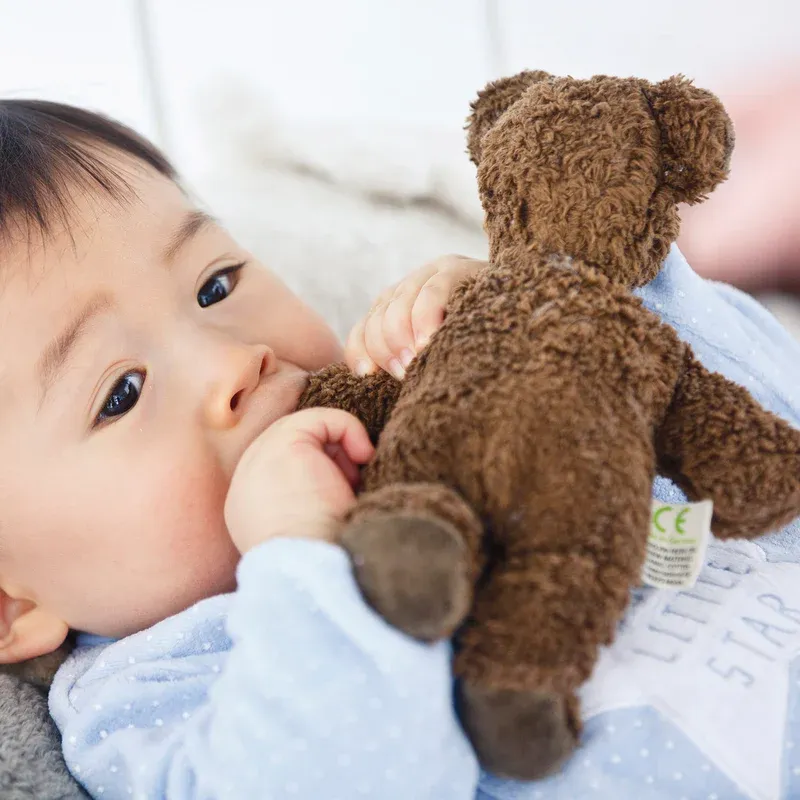
Durability depends on materials like polyester plush and ABS plastic, which resist wear, tear, and stains better than many natural alternatives.
Durability vs. Material Trade-offs
- Polyester Plush and Fiberfill: Offers excellent shape retention and washability, making it a staple for plush toys that undergo rough play and washing cycles.
- Cotton and Wool: Natural fibers offer softness but can degrade faster, shrink, or lose shape over time, especially if improperly cared for.
- Hard Plastics (ABS, PVC): Durable and impact-resistant, ideal for toy parts requiring rigidity, but PVC has environmental and health concerns prompting shifts toward safer plastics.
- Rubber and Silicone: Natural rubber is durable under chewing stress but can degrade when exposed to sunlight or moisture over long periods. Silicone offers superior longevity and resistance but at higher cost.
- Eco-Friendly Materials: Recycled fibers and biodegradable stuffing are increasingly popular, but some still lag behind traditional materials in durability and require consumer education for proper use.
Manufacturers must balance durability with cost, sustainability, and safety, often opting for material blends or coatings to extend toy life.
| Material Type | Durability Characteristics | Advantages | Limitations/Considerations |
|---|---|---|---|
| Polyester Plush & Fiberfill | Excellent shape retention, washable, resists wear | Ideal for plush toys that face rough play | May feel less natural than cotton |
| Cotton & Wool | Soft but prone to shrinking, faster degradation | Natural feel, breathable | Requires careful care; less durable over time |
| Hard Plastics (ABS, PVC) | Durable, impact-resistant | Suitable for rigid toy parts like eyes, teeth | PVC raises environmental/health concerns; shift to safer plastics underway |
| Rubber & Silicone | Natural rubber durable under chewing but degrades with sun/moisture; silicone highly resistant | Rubber safe for teethers; silicone offers longevity | Silicone is costlier; rubber less UV stable |
| Eco-Friendly Materials | Recycled fibers & biodegradable stuffing improving but less durable than traditional | Environmentally friendly option | May degrade faster; needs consumer education |
4. What role do environmental and sustainability factors play in material selection?
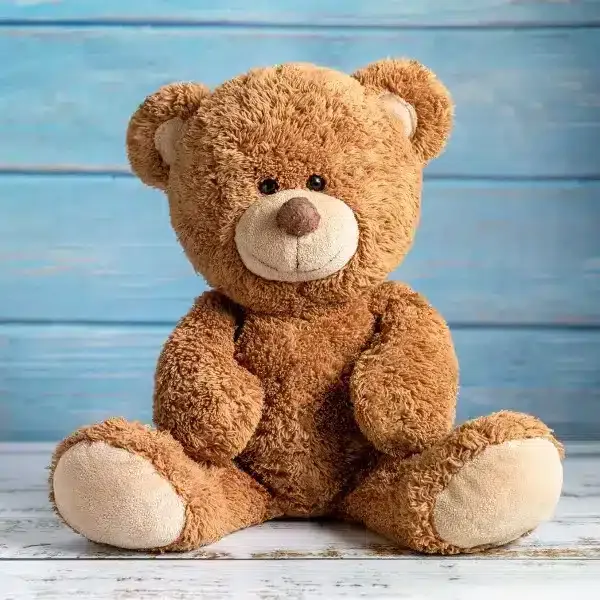
Sustainability drives increased use of biodegradable, recycled, and organic materials to minimize environmental impact without compromising safety and performance.
Sustainability in Toy Materials
- Biodegradable Fabrics: Organic cotton and hemp decompose naturally but require organic certification and consistent quality.
- Recycled Materials: Polyester and fiberfill made from recycled plastics reduce landfill waste. Some brands use recycled PET bottles as stuffing fibers.
- Certifications and Standards: GOTS (Global Organic Textile Standard), OEKO-TEX, and FSC (Forest Stewardship Council) guide responsible sourcing.
- Manufacturing Impacts: Material choices affect water usage, carbon footprint, and chemical waste, pushing factories toward cleaner processes.
- Consumer Awareness: Increasing demand for eco-friendly toys influences brands to innovate with sustainable materials, but price sensitivity remains a challenge.
Sustainability is no longer optional—it’s a critical part of product development and marketing in the toy industry.
| Sustainability Factor | Description | Examples/Standards | Impact on Toy Material Selection |
|---|---|---|---|
| Biodegradable Fabrics | Natural fibers like organic cotton and hemp that decompose naturally | Require organic certification (e.g., GOTS) | Encourages use of renewable, eco-friendly materials |
| Recycled Materials | Use of recycled polyester, fiberfill, and PET bottles | OEKO-TEX certification, recycled content labeling | Reduces landfill waste and raw material demand |
| Certifications & Standards | Certifications ensuring responsible sourcing and safety | GOTS, OEKO-TEX, FSC | Builds consumer trust and verifies sustainability |
| Manufacturing Impacts | Influence on water use, carbon footprint, chemical pollution | Cleaner factory processes, green tech | Drives innovation toward environmentally-friendly production |
| Consumer Awareness | Growing demand for eco-friendly toys | Market trends, price sensitivity | Pushes brands to innovate but challenges cost management |
5. How can innovative materials improve the functionality and appeal of toys?

Innovations like antimicrobial fabrics, smart textiles, and responsive materials enhance toy safety, interactivity, and sensory experiences.
Emerging Material Technologies
- Antimicrobial Fabrics: Help prevent odors and bacterial growth, extending toy freshness and hygiene, especially important in plush toys for infants.
- Smart Textiles: Incorporate sensors or light-up fibers to engage children interactively, blending play with technology.
- Recycled Bio-based Plastics: Offer durability with reduced environmental impact, replacing traditional petroleum-based plastics.
- Sensory and Therapeutic Fabrics: Textures designed to calm or stimulate, used in special needs toys or therapeutic products.
- Durability Enhancements: Coatings and treatments improve stain resistance and tear strength without compromising softness.
Innovation helps brands differentiate products and meet evolving consumer expectations for safety, interactivity, and sustainability.
| Innovative Material Type | Functionality & Appeal Improvements | Application Examples | Benefits |
|---|---|---|---|
| Antimicrobial Fabrics | Prevent odors, inhibit bacterial growth | Plush toys for infants, hygiene-critical toys | Extends freshness, improves hygiene |
| Smart Textiles | Embed sensors, light-up fibers for interactivity | Interactive plush, educational toys | Enhances engagement, blends play with tech |
| Recycled Bio-based Plastics | Durable plastics with lower environmental impact | Toy parts replacing petroleum-based plastics | Eco-friendly, maintains durability |
| Sensory & Therapeutic Fabrics | Textures designed for calming or sensory stimulation | Special needs toys, therapeutic products | Supports sensory development, calming effects |
| Durability Enhancements | Coatings that resist stains, tears without losing softness | All toy types needing extra durability | Prolongs toy lifespan, maintains tactile quality |
Conclusion
Choosing the best materials for toys is a nuanced process balancing safety, durability, environmental responsibility, and user experience. As a leading plush toy manufacturer with advanced production and quality systems, Kinwin offers tailored solutions that meet the highest industry standards.
Whether you want eco-friendly fabrics, durable synthetics, or cutting-edge smart materials, Kinwin is ready to help you customize toys that delight customers and build lasting trust. Contact Kinwin today to discuss your unique product needs and bring your toy ideas to life with expert craftsmanship and innovative materials.




